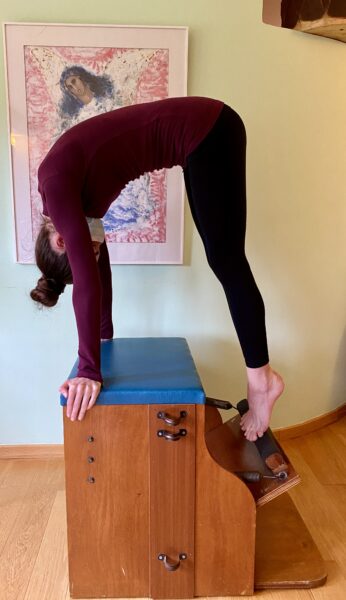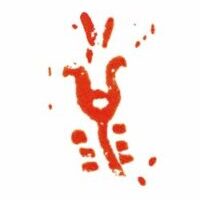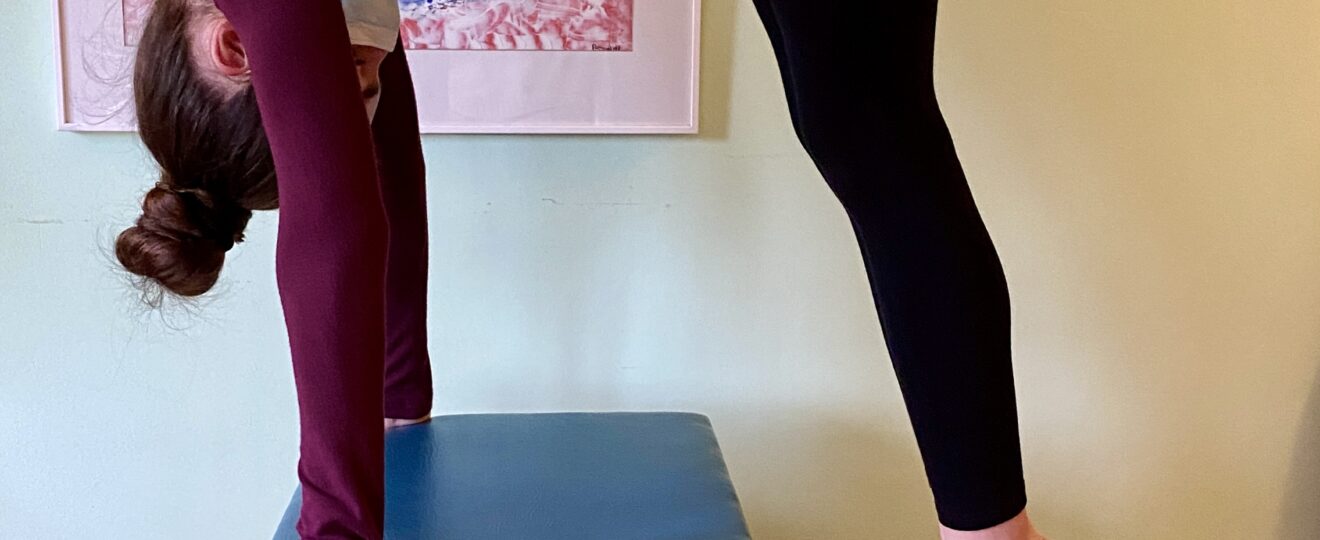SPRING POSITION
On my hand made (before commercial machines) Wunda Chair, the best setting is to have one spring up and one down.
Look for medium support on your Wunda Chair.
STARTING POSITION
Face the the seat of the chair.
Place the palms of the hands on the back corners of the seat. The fingers are facing outwards. Keep all your fingers together. There is a little bit more weight on the little finger and the outside edge of the arm.
The elbows are very slightly bent. It is important to avoid hyper extending the elbows. You should feel the connection between the arms and the upper back.
Spread your toes, particularly between the big toe and the second toe, and place the toes of one foot on the bar and press it down. Mount the bar with the other foot, spreading these toes as described. Have the feet and legs closed, straight and in parallel. Be careful not to hyperextend the legs. The legs should feel like 2 columns of energy. An alternative is the “V’ position, with the legs moderately turned out. I am choosing this position because it is easier to be sure of the leg alignment. See my blog GOOD LEG ALIGNMENT IS ESSENTIAL FOR EVERYONE
It is a position which makes it easier to release the lower spine.
Shift your body weight and bring the shoulders directly over your wrists.
Make sure the shoulders are relaxed and down away from the ears.
Bring the back into the FIRST POSITION (or rounded) of the spine. See my blog about all the details of this position. Jerome Andrews’ Pilates. THE FIRST SPINAL SUCCESSION.
Check that your hip joints are fully relaxed.
The weight of the head is surrendered completely to gravity and is in a position where you can look at the legs through the exercise “spot” the leg alignment.

BREATH OUT.
Feel the toes, especially the big and second toes if you are working in parallel. Sense an energy passing up through the inside of the legs and engages the pelvic floor This energy passes through the back of the spine, spinous process by spinous process, starting at the coccyx and arriving at the atlas, and out the top of the head in a long arch, as you move.
The weight of your body transfers more and more onto the arms and you feel the support of the shoulder blades.
Allow the springs to lighten and help you, allow yourself to be carried up. Without losing the First Position of the spine, think of sending your sit bones high to the ceiling.
BREATH IN
Feel as if you fill the back of the lungs with air. Breathing in this way will deepen the position of your spine.
Reverse the spinal succession, following the back of the spine from the atlas to the coccyx.
Lower the bar with moderate speed.

REPETITIONS
3-5
Breakdown of repetitions.
- How does my body feel, today, right now, as I do the exercise. Notice using the knowledge that I have, what can I do better?
- I apply my knowledge and refine what I am doing.
- According to my teacher, Jerome Andrews, number 3 is perfect!
- I hone my concentration and see if I can do the exercise better than my previous best.
- All the above applies. What can I do even better.
NOTES
I have chosen an out breath to go up. As we breath out the diaphragm travels up internally leaving more space for the engagement of the pelvic floor and the hollowing of the abdomen as our spine deepens it’s position.
Breathing in on the way down gives a sense of suspension.
It can, of course be done the other way round, just as effectively, and slightly adjusting the focus.
The “Washer Woman”, see my video is a great preparation for The Pike. https://youtu.be/mgWWTfijmP0



